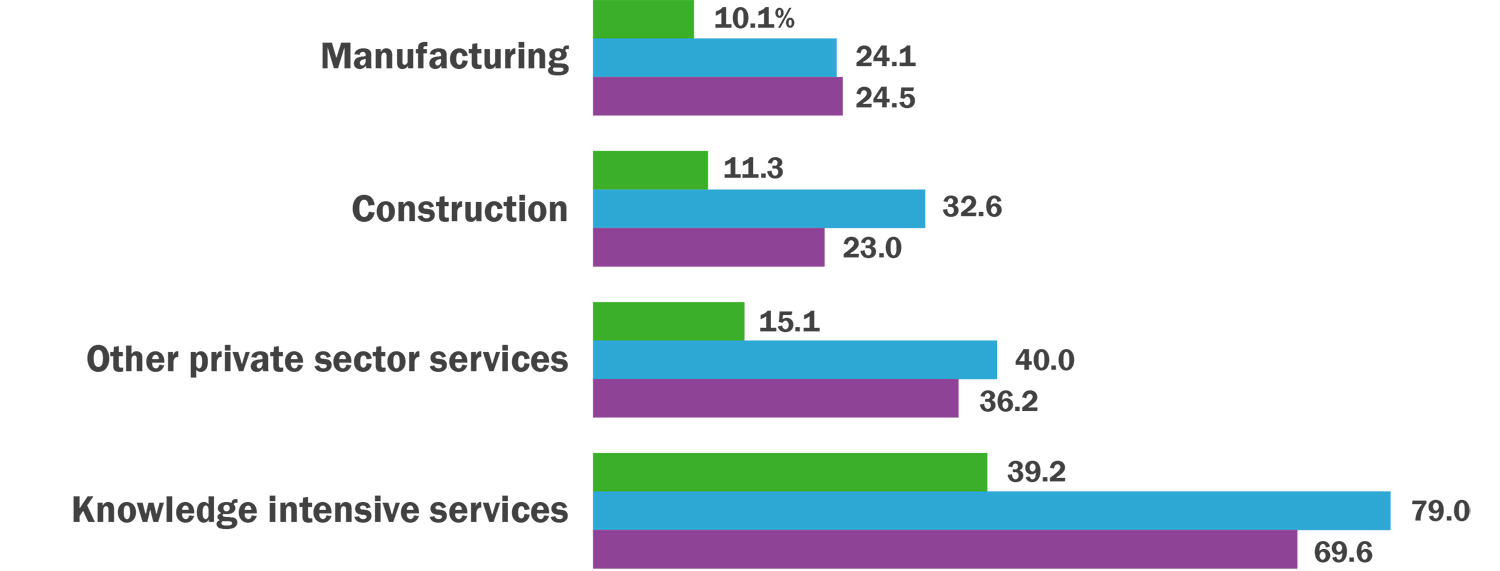The economic and labor shifting sands remain in flux
Are we there yet?
As we slowly crawl towards normalcy, one can see the contours of the future of work, the workforce, and the economy more clearly. “I think we know that we’re not simply going back to the economy we had before the pandemic, but it will take time to see exactly what the changes will be,” said Jerome Powell, Chairman of the US FED. He added that “It seems a near-certainty that there will be substantially more remote work going forward. So that’s going to change the nature of work and the way work gets done.”1
Will you be going back to the office?
Business productivity, teams’ effectiveness, and jobs’ nature will guide the rules and expectations of who will return to the office and when. A hybrid work model, where employees balance time between office and remote, is gaining acceptance by companies. The initial rumors of the death of office work were highly exaggerated. While things remain in a slowly settling state of flux, it is widely accepted that fewer employees in most industries will work from home less than initially anticipated.

Businesses and employees strive for higher productivity. In-person teamwork is more inducive to collaborations and potentially higher productivity. At the same time, the right work balance results in a motivated and more productive workforce. A recent survey revealed that burnout rates among office workers are about 30%, while the rate drops to 23% for remote workers.3
Navigating the uncharted waters
Employers and the workforce are in this together. Their common goals appear centered around work models and environments that adapt to the new normal. The significant shifts in the global economy, businesses and labor force are far from over. The visible effects of the ongoing changes are felt in many ways, including shortages of workers, supply chain disruptions, inflation and stubborn health threats. As the efforts to open the economy pick up speed, the highly anticipated return to the office is also gaining momentum. Adapting to and managing the hybrid work environment require special considerations by businesses and employees, including remote workers.
Businesses
- Adopt a well-defined hybrid work model with clear guidelines
- Prepare for higher business costs, especially labor, due to shortage of workers
- Adapt office space for the needs of returning employees and their potential concerns, especially their safety and wellbeing
- Adopt clear policies for working from home the define work hours, acceptable workplaces and guidelines for PTO and vacations
- Require employees to set specific work hours to help their team plan accordingly
- Ensure that remote workers use their vacation and PTO to avoid undeclared de facto vacations
- Provide remote workers with secure equipment and tools needed for conducting business and team collaboration
- Be prepared for potential higher than usual resignations or retirement rates
- Invest in creating team collaboration to protect and enhance employee engagement
Remote employees
- Be transparent. Provide your employer and teammates with precise work hours, availability for calls and future PTO or vacation plans
- Be proactive. Initiate conversations with your colleagues and managers to learn about their expectations and find out how you can contribute to meaningful projects
- Be predictable. Stick to your set work hours without mixing work with other activities. Work as if you are in the office because you are on duty
- Avoid burnout. Use your PTO and vacation time to avoid undue stress or burnout
- Make accommodations for hybrid work that require spending time at the office
- Be engaged. Make an extra effort to engage with your team, including volunteering for tasks that help everyone
- Protect your work. Take security training to help ensure that your workplace is protected from cyberattacks
- Keep work tools for work. Maintain a clear separation between work tools and personal ones. Do not allow anyone to use your work tools
Office workers
- Review new office guidelines, space assignments and shared work areas to ensure that everyone is safe and comfortable with the new surroundings
- Respect the personal space of others and ask for permission before approaching your colleagues
- Remember to include your remote colleagues in meetings and engage them in the discussions. Avoid turning remote workers into listeners at your meetings
- Proactively update your remote colleagues, find out their needs and provide them with exceptional support
What is next?
Businesses across the globe and employees are navigating uncharted waters together, each in their own way and as the changing circumstances dictate. The return to a new normal may see some setbacks. Still, everyone is ready to emerge from the current situation and make the next phase of recovery success. Hybrid work is here to stay and will help businesses and employees adapt to the new realities and build more efficient enterprises that pay more attention to their employees.
Are you wondering about how to adapt to a hybrid workplace? We’re happy to discuss your unique situation and offer some insight.
- 1, 2. Bloomberg August 2021. “The Hybrid Work Revolution is Already Transforming Economies.“
- 3, Atlassian November 2021. “The Right Rituals Lead to engagement.“
